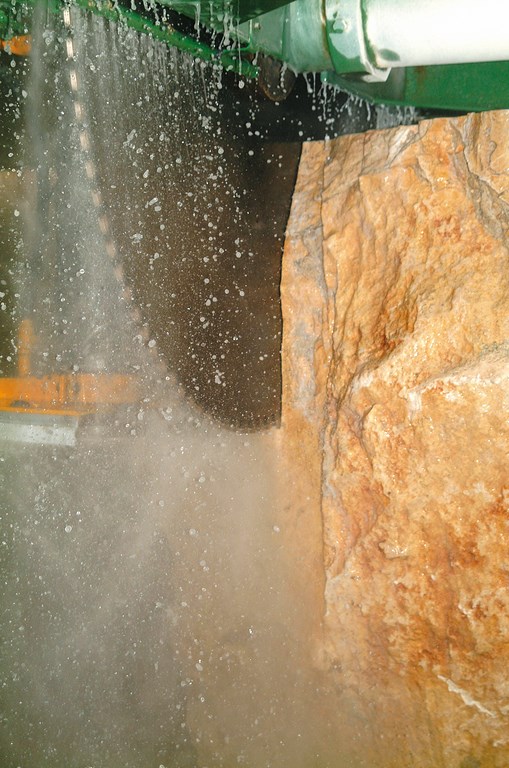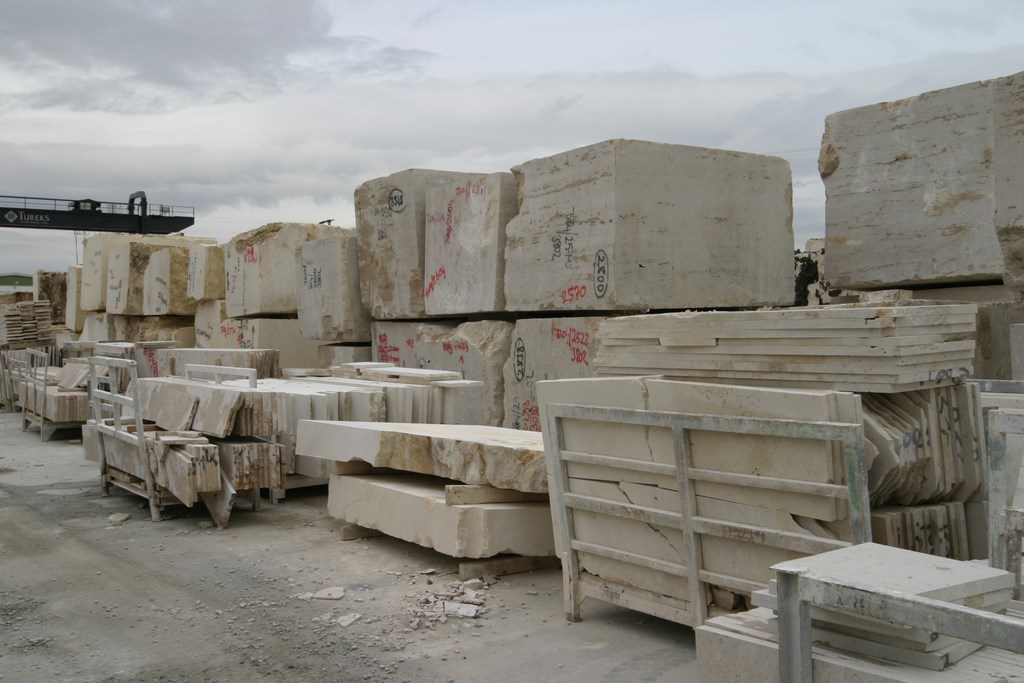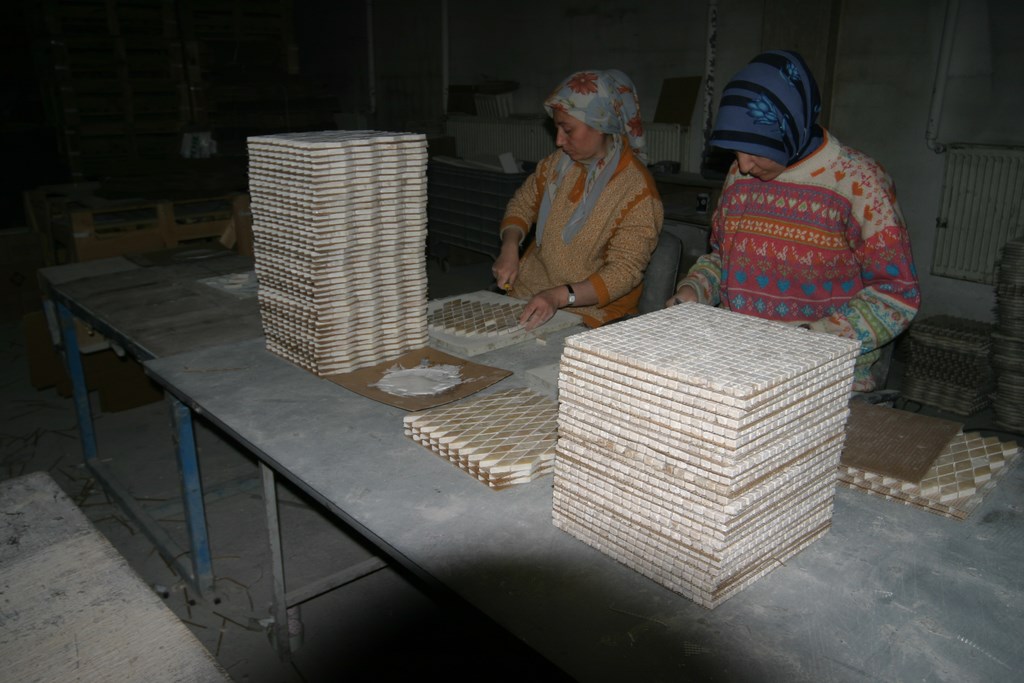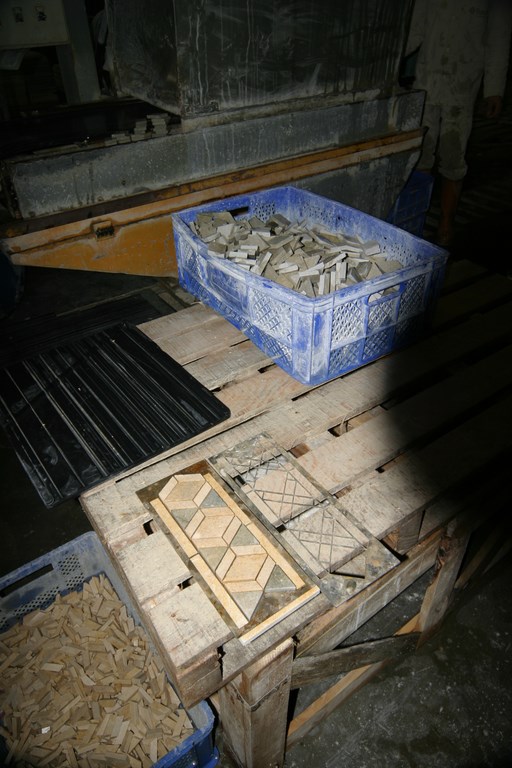Digging Quarries

Natural stone is certainly the most time-honored of all building materials. From the pyramids of Egypt to the temples and civic buildings of ancient Greece and Rome; from the palaces and villas of the Renaissance to the most contemporary structures of our modern era, we see a material forged within the earth for millions of years that has been painstakingly quarried and shaped into myriad forms both functional and decorative.
Even with the advent of cementitious components and a range of other manufactured substitutes, stone remains the material of choice in a great many applications. In fact, the range of natural stone materials available to designers and builders expands almost daily in response to the specific demands of watershapers and other designers and contractors – and there’s no end in sight.
Our company, tr stone, is a U.S. distribution facility owned and operated by one of the world’s largest stone producers, Tureks, based in Afyon, Turkey. The best thing about the marketplace from the perspective of designers and builders is that high-quality stone is now available from a wide range of domestic and foreign sources in a number of distinctive forms, colors and textures.
DYNAMIC TRENDS
Indeed, the range of products available in the modern stone marketplace is virtually limitless: You’ll find everything from pavers, coping stones and stepping stones to block and ledger stone, statuary and all manner of pilasters, countertops, pillars and columns – in all shapes and sizes, custom and off the shelf.
Even the materials that don’t make it to the finishing shop, including boulders and smaller stones that comprise the by-products of the formal quarrying process, will be finding their ways into all manner of decorative settings.
And when you factor in the variations of color and texture that exist within even a single type of stone – the rainbow of hues in travertine, for example – the aesthetic possibilities become even more boundless. Furthermore, every quarry is different, every piece of stone unique, and there’s a subtle spectrum of variations that lends the material a natural quality that can never be accurately or fully mimicked by a synthetic material.
| The scale of quarrying operations is immense and involves the systematic, careful slicing away of cliff faces to form blocks and slabs suitable for processing. These cliffs often dwarf the cranes and other machinery used to move the quarried stone to the factory for processing. |
The earth is fantastically prolific when it comes to making stone, but it is not much concerned with what one might call uniformity. The processes of extracting, forming, designing and placing stone materials in the most elegant and appealing ways possible are therefore challenges shared by everyone from the quarriers and the craftspeople in the finishing shop to the architects, watershapers and artists who have for centuries used this most fundamental of all building materials.
Even with that history behind it, however, stone used in exterior settings is emerging and growing these days with a tremendous momentum. A huge percentage of that growth has to do with watershapes and suppliers’ increasing ability to turn out products designed specifically for use with water, such as coping stones, fountain bowls, scuppers and the like.
| The quarried material is brought to the factory, where it is classified by quality, character, color and intended use before being cut to various specific dimensions and being stored in batches so clients receive materials with consistent textures and features. |
More surprising is the fact that even with products that aren’t necessarily used with water – pavers, flagstones, ledgers, wall caps, columns and more – we on the supply side see that the majority of those stone forms are, more than ever before, being used in conjunction with pools, spas or fountains of some kind.
When you add firepits and barbecues to the pools, spas and fountains, what we see is a literal renaissance in the use of natural stone. While much of the action is in higher-end custom residential and commercial projects, we’ve also seen the use of stone filtering into lower-budget markets as upgrades that set clients’ gardens or pools or entertainment areas apart from those of their neighbors.
IN THE QUARRY
The existence of this active marketplace has resulted in innovation. Tureks, for example, has developed a form of coping intended for remodeling projects that fits over existing brick or concrete coping on pools and spas, and other suppliers have come up with new ideas and products in response to the growing demand for stone in increasingly creative applications.
As never before, companies like Tureks and tr stone are becoming more involved in working directly with watershapers (in much the same way we’ve long worked hand in hand with architects) in making recommendations for material types and sources and developing and designing custom pieces. This street-level involvement makes all of us more responsive to individual needs and fires the stone industry’s own creativity, worldwide.
|
Stone Species Throughout history, marble, travertine, limestone and granite have been used to create the world’s most beautiful and enduring structures, hardscape and statuary. In mining these materials in Turkey, Tureks works hard to categorize and assess features of the stone to help those who select and work with the material know what the features and variations mean with respect to quality and aesthetic potential. Building that knowledge base involves getting some basic definitions under your belt. [ ] Marble is a metamorphic rock formed by the alteration under pressure of limestone or dolomite. Often irregularly colored by impurities, marble is used especially in architecture and sculpture. The colors range from white to black, but you’ll also see yellows, reds and greens as well as veined or clouded appearances. The name “marble” is also used to describe other rocks of similar use and appearance, including serpentine and verd antique marbles. The term is used less correctly to describe polished porphyry, granite and other similar materials. There are also some specific types of marble prized for certain aesthetics or practical applications, including Breccia marble, which consists of limestone fragments cemented together; ruin marble, which, when polished, reveals forms resembling those seen in ruins because of dispersion through the material of iron oxide; shell marble, which contains fossil remains; and statuary marble (such as Parian or Carrara), which has a pure white color and a fine-grained texture. [ ] Travertine is a massed form of calcium carbonate that results from deposition by ancient springs or rivers. It is often beautifully colored and banded as a result of the opportune presence of iron compounds or other impurities at various stages of deposition. Travertine is also variously known as onyx marble, Mexican onyx and Egyptian or Oriental alabaster. It is generally less coarse-grained and takes a higher polish than do ordinary calcium carbonate stalactites and stalagmites, which are similar in chemical composition and origin but aren’t quarried for architectural use. [ ] Limestone is a sedimentary rock composed of calcium carbonate as well. It is ordinarily white, but it may be colored by impurities including iron oxide (making it brown, yellow or red) and carbon (making it blue, black, or gray). It will have textures that vary from coarse to fine. Most limestones are formed by the deposition and consolidation of the skeletons of marine invertebrates, but a few types originate in chemical precipitation from aqueous solutions. Either way, limestone deposits are frequently of great extent and thickness. The action of organic acids on underground limestone deposits causes such formations as the Luray and Carlsbad Caverns as well as Mammoth Cave. Limestone is also used as a flux in the extraction of iron, an ingredient in Portland cement and as a source of lime. In addition and obviously, it is used as a building stone and for architectural ornamentation. [ ] Granite is a coarse-grained igneous rock of even texture and light color. Composed chiefly of quartz and feldspars, it usually contains small quantities of mica or hornblende with traces of a variety of other minerals. Depending upon the type of feldspar present, granite may be pink, dark gray, or light gray. The rock forms from molten rock (called magma) under pressure. Granites are among the oldest known rocks on earth, with some examples stretching to the earth’s earliest geological periods. Crystallized at depth, granite masses are exposed at the earth’s surface by movement of the crust or by the erosion of overlying rocks. A coarse-grained granite, called pegmatite, can contain minerals and gemstones of economic value. — D.H. |
As we learn to supply just the right pieces for the job, we see approaches developed on the highest end (such as the stonework at Bellagio in Las Vegas) filtering across to projects of a much more modest scope. It’s all exciting: Installations at both levels will endure countless years of use because of the beauty and durability of the basic material.
Everything starts in the quarry, of course, but relatively few people are aware of the scale and complexity of the work. Tureks, for example, has been in business for 23 years, has 12 separate sites in Turkey and employs 500 people on five continents to produce and purvey 5,000 different products (including a million square meters of flooring material alone). It’s bigger than some operations, but not atypical.
Quarrying is a capital-intensive business that relies on exhaustive geological studies and surveys of potential digs and huge investments in site development. Along the way, we use some of the heaviest cranes and excavating equipment used by any industry along with some of the world’s biggest and most powerful saws, planers and honing machinery. All of this large-scale mechanization is needed to exploit quarries that in some cases will be in operation for decades on end.
No matter how long I’ve been in the business, I’m still fascinated by the variety and subtle complexities of stone produced by individual quarries. As explained in the sidebar at right, marble, travertine, limestone and granite are each found in specific geological locations often related to relative elevation.
In other words, different strata reflect different conditions at the time the rock was formed eons ago, so marble or travertine quarries, for example, will have material that ranges in color from extremely dark to extremely light and all shades between, with endless variations of color and texture between the extremes depending on the level at which the rock is harvested.
IN THE FACTORY
Once we begin to work with the quarried stone, we see all sorts of variations in the factory, even from block to block. These blocks range in size from two to ten tons and are carefully analyzed and categorized according to quality and characteristics in adherence with strict standards across a range of features.
Once the block has been categorized, it is sorted by intended use – an important process because it is essential to ensure our clients that a batch of material will have n acceptably consistent level of quality and appearance. All of this preparatory precision enables stone suppliers to stand behind their products and assure clients that they’ll receive material without extreme or random variations.
| Much of the work in preparing stone for its intended use is done by saws and polishing machines on a huge factory floor, but the work of assembling small pieces into mosaics and border patterns is still done by hand. Here as everywhere else, consistency in appearance is the ultimate goal. |
As suggested above, stone suppliers prepare different sorts of materials in response to trends in market demand. We know, for example, that travertine pavers, countertops and tiles are popular in the southwestern United States these days, probably because they work well with Spanish Colonial, Mediterranean and contemporary styles.
|
Visiting Ancient Ground As has been previously mentioned in these pages by David Tisherman, Turkey is unique among nations for its treasure trove of ancient ruins as well as its unique geology. His descriptions of his travels capture his excitement in seeing ancient monuments and buildings with his own eyes and expanding his sense of the history and traditions of art and architecture. In his most recent trip, we at Tureks were pleased to host Tisherman and the rest of his group for a tour of some of our facilities. (As the credits indicate, a few of the photographs he took during the tour have been used to illustrate this article.) What we tried to convey to the group during its visit is that Turkey is not only an exciting place to study the use of stone material in construction, but also a place to see, at first hand, deposits of marble, travertine, limestone, granite and a host of other materials in a variety deepened by the range of stone found within each of those major categories. The country’s varied landscapes were created by earth movement that has shaped Anatolia for hundreds of thousands of years. Those forces continue to manifest themselves in frequent earthquakes and occasional volcanic eruptions. Given that geological history, it’s not surprising that more than 80 percent of the land surface is rough, broken and mountainous and of limited agricultural value. This is especially true in the east, where two mountain ranges converge into a lofty plain with a median elevation of more than 4,500 feet. The intensive folding and uplifting of the mountain belts was accompanied by strong volcanic activity and intrusions of igneous rock material through the past 1.6 million years. These processes are still at work as the Turkish and Aegean tectonic plates – moving south and southwest, respectively – continue to collide. There’s a reward for seeking out and working in remote, rough areas: Some of the world’s most beautiful marble is found in the highest and least-accessible places. — D.H. |
In the northeast, by contrast, the prevalence of more formal, colonial-style designs results in greater demand for lighter marbles. These sorts of trends shift with the tides, of course, so we carefully monitor buying habits and respond accordingly: After all, you don’t want to chase markets with a product as heavy and awkward to move as stone!
As much as we’ve seen great growth in the use of natural stone in recent years, we’re also aware that our products aren’t right for every project or every client. No matter how trends ebb and flow, our interest is in seeing stone used in the best possible ways in each and every application, from modest barbecue countertops to elaborate, multi-tiered fountains.
We see natural stone as a valid option in projects at all levels, and our aim is making certain watershapers and others are aware of the full range of possibilities. Ultimately, we know that if these materials are offered, the beauty, durability and timelessness of natural stone will capture enough imaginations to keep us digging in quarries for millennia to come.
Dennis Haase is the general manager for tr stone, the U.S. distributor for Tureks, a quarrying and stone-manufacturing firm with numerous facilities in Turkey. After graduating from Tulane University in New Orleans with a degree in business management in 1989, Haase began his career as a business consultant who specialized in re-organizing struggling companies. This activity brought him into contact with firms that distributed natural stone products, and he began working with Tureks two years ago. Haase now works closely with various architects, landscape architects and contractors, supplying them with a wide range of custom and standard stone products.

















